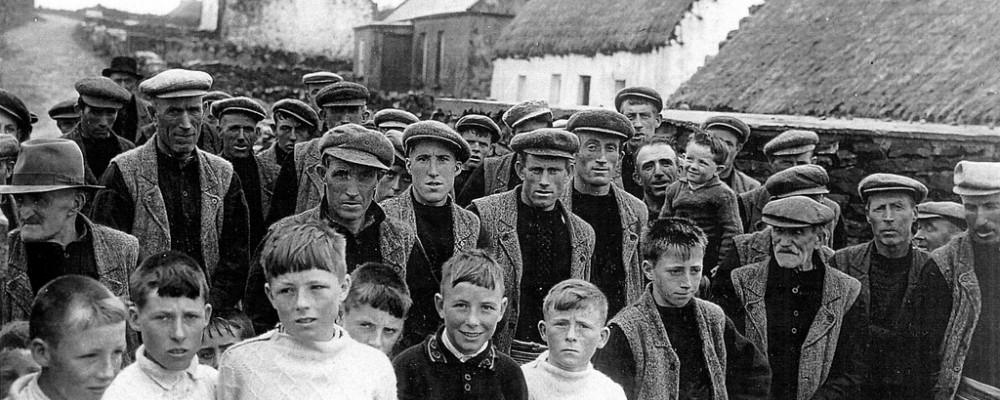
What Is Knitting? A Brief History of Knitting And Its Uses
There are many basic methods of making clothes, and knitting is one of the oldest of them; there are Egyptian knitted artefacts that date back to the 5th century AD. Hand-knitting can be done with just needles and yarn, and it doesn't need heavy equipment like looms, so it was and is an accessible and functional craft. A variety of knitting machines are also available today, to create knitted fabrics more quickly and automatically.
Before I discuss the process of knitting, let me tell you about the interesting origins of this traditional method of fabric production.
@OffsetWarehouse blog about the history, method, development and uses of #knitting. #sustainabletextiles

The history of knitting
Knitting is believed to have originated in the Middle East in the 5th century and travelled to Europe with wool traders soon afterwards. Interestingly, the examples of early knitting from Egypt are actually made from cotton fibres, not wool. Many of them have Arabic blessings knitted into them, or symbols to ward off bad luck. In the 14th century, the knitted textile form was used by fishermen to make warm, woollen, weatherproof jumpers for trips to sea. By the 16th century, knitting machines were used to knit hosiery for elite classes.
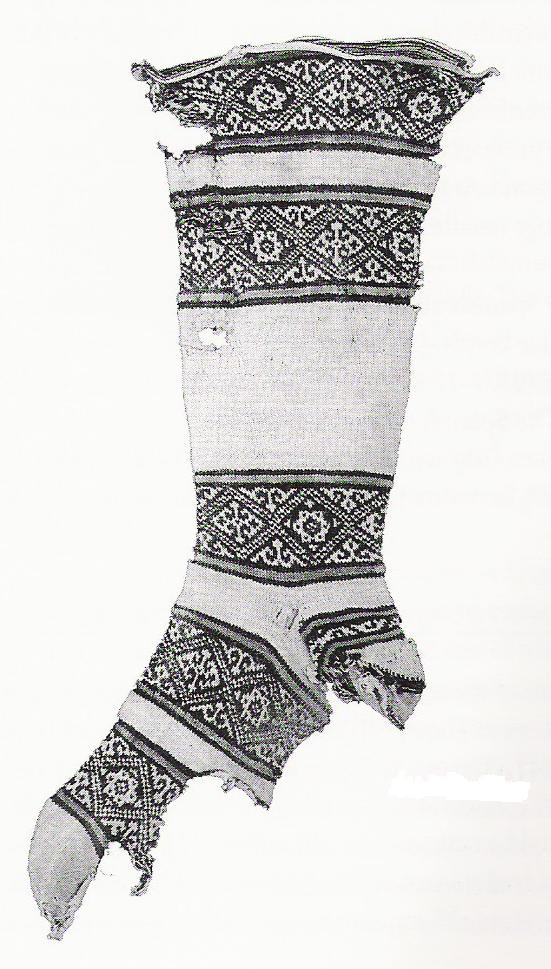
Knitting soon became a local industry in the Highlands and Scotland, employing men in factories to knit stockings that were exported to the rest of Europe. Soon, hats, shawls, bags, jumpers and other forms of knitwear were available in the market. The first knitting loom was built in 1816 and woollen mills were set up to create expensive garments. Eugene Rodier set up the first woollen textile factory in 1853.
By the 20th century, knitwear was part of mainstream fashion. With the introduction of jersey dresses, cardigans and jumpers by fashion labels like Chanel, knitwear was a practical, fashionable and modern choice for men and women.
From the Middle East to Chanel - @OffetWarehouse look at how #knitwear hit the market.

How is knitting done?
The knitting process basically involves continuously interlinking or knotting series of loops of yarn using needles. These consecutive loops are intermeshed into the previous loop structure. Thus the new stitch secures the loop structure by locking the previous stitches that are suspended from it, eventually creating a sheet of material. Just like in weaving, this sheet of materials is a two-dimensional fabric. The difference, however, is that the threads run straight or parallel in weaved cloth, whereas the yarns follows a meandering path in knit fabric. The symmetric looping of yarn causes the resulting fabric to be elastic and stretchy, a highly desirable property that makes knitwear a wardrobe staple in winters.
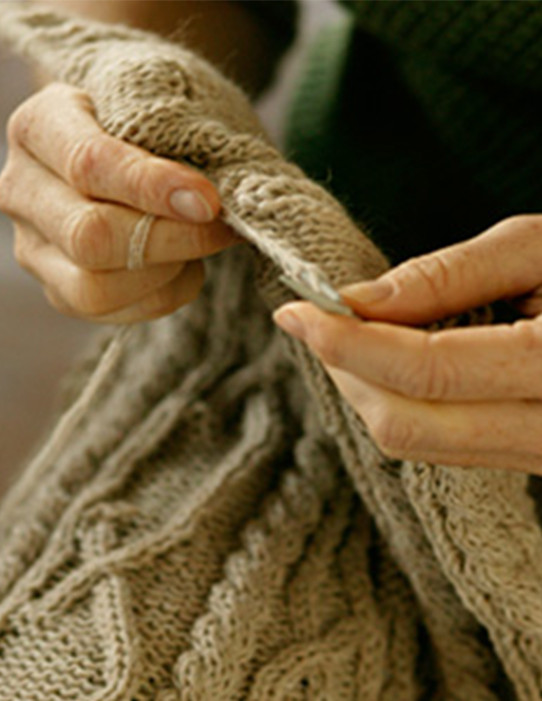
Knitting is done by hand or using machines. In hand-knitting, fabric is produced using flat knitting or circular knitting methods. We use two straight needles for flat knitting, while circular knitting is performed with sets of double-pointed needles or circular needles. While flat knitting produces two-dimensional flat fabric, circular knitting creates tubular-shaped fabric.
The basic process begins with casting on, or creation of stitches on the needle. Different methods of casting on yield different effects in the finished fabric. By varying the insertion of the needle into the previous stitch in different ways, different types of stitches are made and desired patterns can be formed in the fabric.
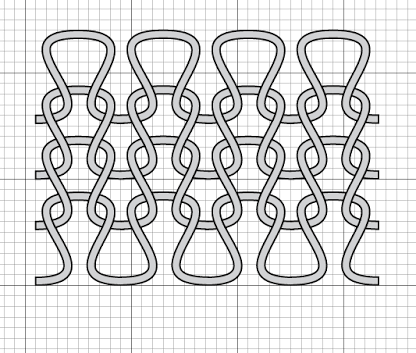
All knitting machines follow a basic knitting process with six steps, although the machines look mind-bogglingly complicated! Knitting on machines involves low carbon steel bearded needles, which are supported on a needle bar. There is a presser bar to depress the beards, and the process is outlined below.
- The needle bar goes forward and the open needles clear the web.
- The weft thread is placed on the needles
- It is made to fall loosely
- This thread is pulled in the open needles by drawing the needle bar backwards.
- The presser bar drops to close the needle loops and draw the weft back through the loops
- The needles open and a new row of loops is revealed
Properties of knitwear
Depending on the direction in which the yarn travels during the knitting process, two types of knitting are identified: Warp knitting or Weft knitting.
Knitting type
In warp knitting, yarn loops vertically in the fabric. This type of knitting can only be performed by warp knitting machines. However, in weft knitting, the yarn travels horizontally. This type of knitting can be done by hand or using weft knitting machines. The properties and structure of the fabric differ based on whether warp or weft knitting is used in it. Warp knitting results in flat or open width forms, while weft knitting results in tubular fabric pieces. Warp knitting secures the loop structure and is resistant to runs. On the other hand, weft-knit fabrics are easy to make but it will unravel when cut, unless repaired promptly.
Stitch type
When the basic knit stitch is used, each loop is drawn through the loop below it and the finished fabric looks like rows of “V's” stacked vertically. Purl stitches resemble wavy arches across the length of fabric. Bulkier textures that retain heat can be created using knitting patterns such as the Aran knitting patterns, which resemble ropes. Named after the Aran Islands off the Irish Coast, perhaps ropes were a daily inspiration for the inventive and creative minds that pioneered this particular method.
Different types of #knitting have different #fabric properties and uses - #knitwear post by @OffsetWarehouse

Learn from Sue Blacker of Blacker Yarns about the natural and eco characteristics of wool to better understand why this fibre is primarily used for knitting.
Jersey fabrics and industrialisation of knitting
One of the most impressive properties of knitting is how it enhances the 'stretchability' of a fabric. Single-knit fabric is stretchy and lightweight, making it perfect for fitted yet comfortable clothing. This type of fabric was first commercially produced in Jersey in the Channel Islands, and was also known as, unsurprisingly, Jersey!
Jersey commonly refers to any knitted fabric without a distinct rib. Although it was originally made of wool, the introduction of commercial knitting systems led to production of jersey fabric from other fibres like cotton and rayon.
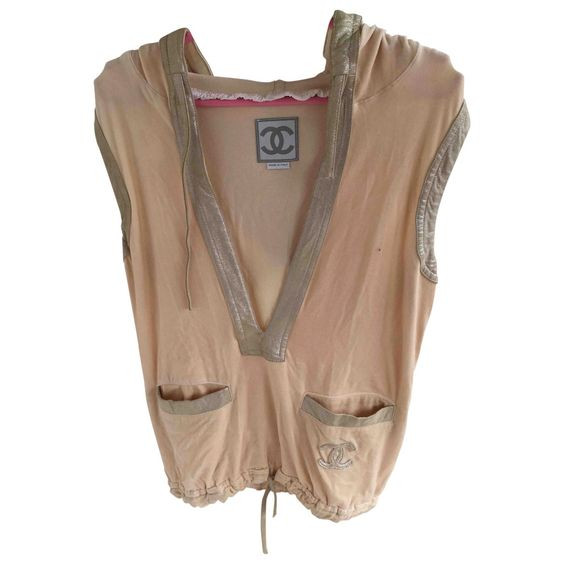
Single-knit jersey fabric is widely used in t-shirts. It is soft and pliable, and is characterised by one smooth side and a purled underside. Variations of jersey include double-knit jerseys, Jacquard jerseys and interlock jerseys and clocque jersey. Apart from sports apparel, inner wear and sweaters, jersey fabrics are also popularly used in upholstery and home furnishings. It has also been showcased in many signature dress styles, including classic knitted suits for women, zigzag Missoni knitwear, chunky cardigans and unisex knitwear designs.
So while knitting began its days as method to make solely practical woollen garments, it has travelled through time and space, evolving into a means of style and on to cult status (note the Nordic knitwear craze). It has implanted itself in our hearts and our imaginations as a pastime and as an industry to become one the most widely used commercial and also personal approaches to garment manufacture. Long live knitwear!
#knitting has evolved from #practical, to #style, to cult! Long live knitwear! @OffsetWarehouse

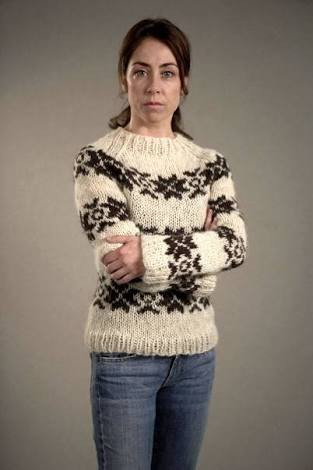
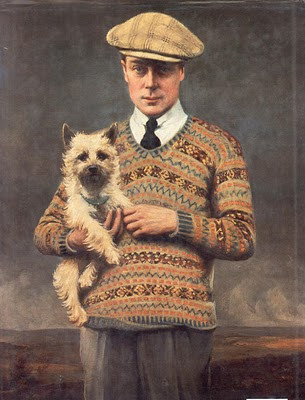
The industry is changing though, with cool innovations using technology to save materials and build new silhouettes. Learn more in this lesson 'Changing The Industry' from Hall Watts of Unmade.
If you are exploring knitting yourself, and want the speed of a machine but perhaps do not have the space or funds, then a small scale machine may suit just fine. This article on 10 Best Knitting Machines can give you some initial information to get you started.
If you found this post interesting please sign up for our newsletter! We’ll let you known about deals, news, events and new fabrics!
And we love to hear your comments on our articles – have we answered any questions you may have, or have we provoked new questions in you? Let us know, or, even better… sign up to our Meet-up group where we host our panel discussions and in-person creative workshops to share ideas, concerns, news and plans in the arena of sustainable and ethical textiles and design!
Interested in learning more about how you can use knitwear in your fashion brand?
The Sustainable Fashion Collective brings you Masterclasses on specific topics within the fashion and textiles industry. Each Masterclass contains lessons from guest experts, from brands to material innovators.
